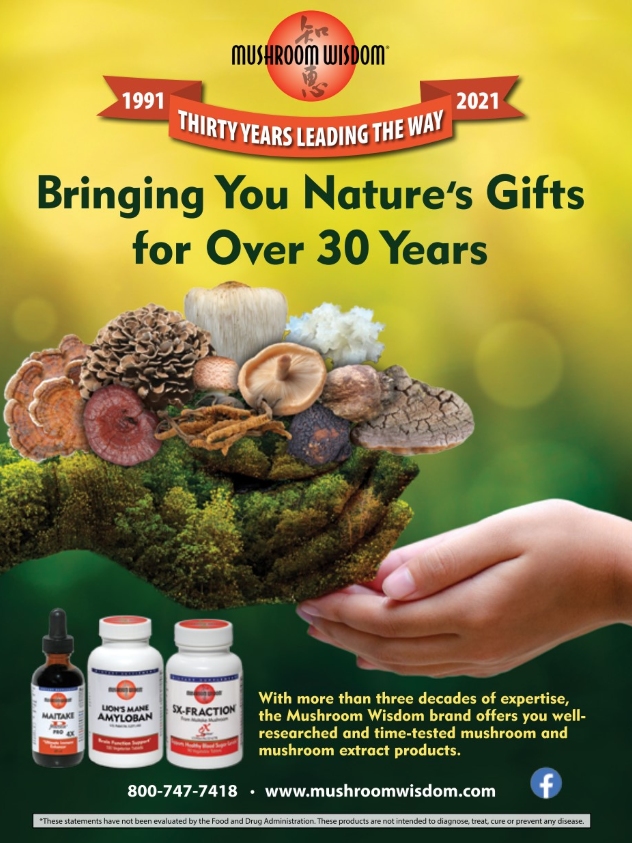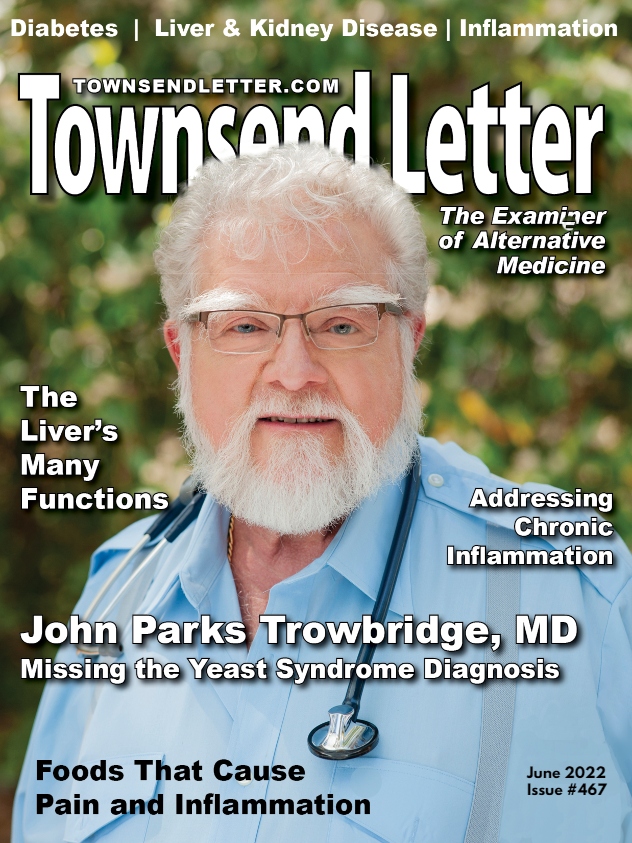by Jenna Henderson, ND
Klotho is a renal protein antioxidant found in mammals that was first identified in 1997. When there was a defect in expression of the gene for Klotho, lab animals aged quickly and died prematurely. Overexpression of the Klotho gene resulted in lab animals living unexpectedly long lives. Destruction of the Klotho gene in mice resulted in accelerated aging and premature death.1 In addition to the shortened lifespan, it was also observed that Klotho-deficient mice fail to grow and had changes in multiple organs of the body, ectopic calcification, arteriosclerosis, osteoporosis, and atrophy of the skin. Although Klotho is most highly expressed in the kidneys and brain, it affects multiple organs in the body. Klotho deficiency is associated with multiple diseases of aging, and therapies to increase Klotho levels provide a new strategy for addressing the problems of an aging population.2
This protein of longevity was named for one of the three Fates in Greek mythology. The first Fate, Klotho, spun the web of life for each person, while the second Fate decided on the length of life and the third Fate cut the web of life. The Klotho protein is most noted for its effect on lifespan and kidney health but has far reaching consequences, including cardiovascular health, bone health, and blood sugar regulation, as well as cognition.2
The description of Klotho in many ways sounds like jing in Traditional Chinese Medicine (TCM). In TCM, the kidneys store the jing, an inherited vitality involved in growth, aging, and reproduction. Most of the jing is inherited before conception; this is part of ancestral chi. But jing can also be nourished and strengthened during our lives. One of the botanicals in TCM that supports the jing is Polygonum multiflorum (Fo-ti or He Sho Wu). The anti-aging properties of this herb are part of TCM legend. When an old gray-haired man was down on his luck, he got lost in the forest and ate Fo-ti to survive. After the ordeal his hair turned black and he went on to father 10 children. We have now identified Fo-ti as one of the herbs that supports Klotho production.3
Klotho exists in two forms—membrane Klotho and secreted Klotho. Membrane Klotho works in conjunction with FGF-23 to regulate the calcium/phosphorus balance. Secreted Klotho is a soluble protein that regulates ion channels and transporters. It also inhibits oxidative stress and the insulin-like growth factor pathway.1 Three types of Klotho have been identified—alpha, beta and gamma forms. Most research focuses on the alpha form, which is generically referred to as Klotho.4
Klotho-deficient mice are indistinguishable from their wild type and heterozygous littermates for the first three weeks of life. After three weeks they stop growing and gaining body weight until they die at eight to nine weeks of age. Although they display diseases of aging found in humans, the precise cause of death is unclear. Klotho-deficient mice also display hypogonadism in both sexes. This appears to be due to disruption of the pituitary or hypothalamus signaling. Function was restored with gonadotropin treatment. It was noted that ovaries transplanted from Klotho-deficient mice to wild type mice worked normally.2
Extensive ectopic calcification of various soft tissues is observed in Klotho-deficient mice. These changes resemble the vascular calcification associated with chronic kidney disease rather than typical atherosclerosis. Calcification was found in the gastric mucosa, trachea, renal tubules, renal arteries, and the aorta. It occurred in the media without intimal thickening or accumulation of foam cells. With chronic kidney disease, this problem is attributed to the handling of calcium/phosphate metabolism.2
Unsurprisingly Klotho-deficient mice have osteopenia with reduced bone formation and resorption similar to the osteomalacia found in kidney patients. This is most similar to senile osteoporosis in the elderly and is distinct from bone issues caused by a lack of estrogen. While estrogen-related bone loss causes increased bone resorption and an increased number of osteoclasts, Klotho deficiency causes a reduction in both bone formation and resorption.2
Skin atrophy characteristic of Klotho deficiency most closely resembles age-related changes. There is a reduced number of hair follicles and a reduced thickness of the dermal and epidermal layers. A lack of subcutaneous fat is also observed.2
Insomnia becomes increasingly problematic in the aging population. A study of sedentary middle-aged adults found a significant correlation between sleep quality and duration and Klotho levels.5 As insomnia is a major problem among kidney patients, further research may find an association with sleep and Klotho levels in that population as well. Another study showed a relationship between sleep apnea and low Klotho levels.6
Thyroid disorders increase with age. One study in an animal model showed that T3 treatment increased Klotho homologous genes.7
In TCM the kidneys relate to the ears, and hearing loss is often a part of the aging process. The Klotho gene is expressed in the inner ear, and Klotho-deficient mice have a significantly higher threshold for an auditory response than wild type mice. The exact role of Klotho on the ear is still being researched, but preliminary information suggests Klotho is involved in electrolyte homeostasis of endolymph in the cochlear duct.2
The loss of libido and sexual function, which comes with aging, may relate to loss of Klotho. Interestingly libido and sexual function are associated with the kidneys in TCM. In one study, higher Klotho plasma levels were strongly associated with sexual desire and function in sedentary middle-aged adults. This trend was seen in both males and females.8
Cognitive decline in aging affects over 50% of the population, and lower levels of Klotho may play an important role. Klotho in the brain is localized in the choroid plexus and hippocampal neurons.9 Animals overexpressing Klotho perform better than controls on multiple tests of learning and memory.10
Klotho is necessary for oligodendrocyte maturation and myelin integrity. Klotho protects hippocampal neurons from amyloid and glutamate toxicity through its antioxidant properties.9 As Alzheimer’s disease is the most prevalent form of dementia, upregulating Klotho may help target this condition. Increased Klotho levels were shown to significantly reduce amyloid plaque, neuronal and synaptic loss, and cognitive deficits in a murine model.11
Not only is low Klotho associated with cognitive decline, a study of nursing home residents found that low Klotho was associated with increased psychological frailty and dependence. Also, more falls occurred in a six-month period in the group with the lowest Klotho levels.12
Lowering Klotho levels in the aging population may also play a role in sarcopenia. Under normal circumstances, fibroblast growth factor-19 (FGF-19) increases the size of human myotubuals in vitro. In a murine model, Klotho-deficient mice were unresponsive to the muscle building effects of FGF-19.13 More evidence of low Klotho affecting the muscles was found in a study of 804 adults, which correlated plasma Klotho levels with grip strength.14
Serum Klotho levels are inversely correlated to metabolic syndrome. Lower Klotho levels were also associated with increased abdominal obesity and high triglycerides in adults.15 A study in a murine model showed that administration of Klotho improved body composition and energy expenditure and reduced lipid content of both the liver and adipose tissue.16
Klotho has many other functions in addition to its antioxidant properties, which include acting as a co-factor for fibroblast growth factor 23 (FGF-23). FGF-23 is a bone-derived growth factor that increases urinary excretion of phosphorus.17 Klotho serves as a non-enzymatic molecular scaffold for FGF-23 signaling.18 It also suppresses production of calcitriol and active vitamin D metabolites, which also helps lower serum phosphorus, as calcitriol increases phosphorus absorption from the GI tract. It has also been suggested that FGF-23 directly suppresses parathyroid hormone secretion, which also helps control serum phosphorus levels.19 Issues of phosphorus control are well-known to kidney patients, but excessive phosphorus may be more of an issue with aging than previously understood.20
In chronic kidney disease, FGF-23 increases dramatically while Klotho levels decline.21 Increasing FGF-23 can serve as a biomarker for chronic kidney disease, and high levels of FGF-23 are associated with increased mortality in kidney patients.22 Dialysis patients at end-stage renal disease typically have very high levels of FGF-23.23 Tests for serum FGF-23 can be found through many laboratories, although it is not commonly tested for by nephrologists. Tests for Klotho levels are not, however, easily available.
FGF-23 secretion by osteocytes increases in response to dietary phosphorus intake and increases in 1,25-dihydroxy vitamin D (1,25D) levels.24 Kidney patients are usually not told to limit phosphorus intake until they are in an advanced stage of kidney disease and phosphorus levels on blood tests are rising. However, it may be beneficial to limit unnecessary sources of phosphorus intake even in early-stage kidney disease to help suppress rising FGF-23 levels. It may also be useful to have enough vitamin D to avoid deficiency, but not overload with vitamin D supplementation.
Keeping FGF-23 low and Klotho high may be useful for a many types of kidney disease.
Diabetic nephropathy: Overexpression of Klotho increased the antioxidant response of Nuclear factor-erythroid 2—related factor 2 (Nrf2) as well as downstream targets of SOD2 and NQO1 in podocytes. Klotho overexpression inhibited high-glucose-induced oxidative stress and apoptosis in podocytes. Increased Klotho also improved kidney filtration and reduced sclerosis of the kidney.25
Although low Klotho levels are typically associated with aging, children with type I diabetes were found to have low levels of Klotho.26
Hypertension: Low levels of Klotho may play a role in essential hypertension. Klotho suppresses the renin-angiotensin system. Low Klotho and high FGF-23 levels were found to be especially detrimental.27 A lack of Klotho was also associated with increased sensitivity to salt loading.28 Increased hypertension due to sensitivity to salt is more prevalent with age. Klotho supplementation improved blood pressure by reducing high salt-induced reduced renal blood flow.29
Polycystic Kidney Disease: PKD like other kidney diseases, shows the same trend of increased FGF-23 levels. Unlike other kidney diseases, autosomal dominant PKD shows an increase in Klotho levels. FGF-23 and soluble α-Klotho levels were both found to be negatively correlated with estimated glomerular filtration rate. This is a significant aberration from the general trend with kidney health. It is unclear if this is due to increased Klotho production or reduced Klotho clearance. (It is interesting to note that unlike most kidney disease, erythropoietin levels can be high with PKD, due to increased production in the cysts.)30
Lupus: Serum levels of Klotho were not found to be different from those in the general population.31 However, the compound microRNA-199a, which is believed to be part of the pathogenesis of lupus, was found to suppress the renal protective effect of Klotho.32
IgA Nephropathy: In a murine model of IgA nephropathy, treatment with Klotho inhibited inflammatory compounds and proteinuria. Klotho also reduced blood pressure and attenuated mesangial expansion characteristic of IgA damage.33
Focal Segmental Glomerulosclerosis (FSGS): This autoimmune inflammatory condition of the kidney has an especially poor prognosis, causing parenchymal kidney tissue to be permanently scarred. In a murine model of FSGS, there was an expected increase in FGF-23, PTH, and serum phosphorus. Treatment with a phosphorus binder helped ameliorate these markers but also caused an increase in Klotho. The renoprotective effect helped slow disease progression, most notably on tubular epithelial cell injury.34
Renal Cell Carcinoma: Klotho is expressed in the kidney tubular cells, where clear cell renal carcinoma (ccRCC) originates. Klotho inhibits cell proliferation, tumor growth, and migration with ccRCC. Higher levels of Klotho are a favorable prognostic indicator.35
Dialysis: As kidneys are the main source of Klotho, those with end stage renal disease have reduced Klotho levels. Low Klotho in maintenance hemodialysis patients is associated with uremic cardiomyopathy.36
It is interesting to note that Klotho attenuated the effect of the uremic toxin indoxyl sulfate (IS). As an oxidant, IS causes endothelial damage and inhibits production of nitric oxide. Klotho was demonstrated to work as an antioxidant against IS-induced endothelial dysfunction and improved the IS-induced reducing of nitric oxide.37
Kidney Transplant: Higher expression of Klotho in donor kidneys is associated with better transplant outcomes. Higher Klotho levels from the donor kidney gave the recipient a better eGFR after transplantation. This trend was seen to observed to continue one year after transplantation.38
Another study found high FGF-23 and low Klotho was a significant predictor of peripheral arterial stiffness in renal transplant patients.39
Cardiorenal Syndrome: Long-term the greatest cause of mortality in kidney patients is secondary heart disease. Cardiorenal syndrome is a complex disorder where acute or chronic kidney disease induces cardiovascular disease and vice versa. Although Klotho is not expressed in cardiac tissue, the anti-aging properties of Klotho have an indirect cardioprotective effect.40
Raising Klotho levels is a new frontier in research. There are companies seeking to develop an easily injectable Klotho treatment.41 Another company is looking to develop therapy with Klotho and mesenchymal stem cells together.42 Fortunately, there is evidence that diet and herbal supplementation can raise Klotho levels. Some supplements can help support function when Klotho levels are low. Many of these herbs are already known for kidney support and/or anti-aging properties.
Diet
Dehydration strongly downregulates Klotho, giving kidney patients another reason for adequate hydration.43
Alcohol also has a negative impact on Klotho levels. Further information may bring more clarity to the effect of diet on Klotho levels.44
One study found that an anti-inflammatory diet correlated to higher Klotho levels in young adults.45 Another study found that a higher inflammatory index of the diet corresponded to better Klotho levels in middle-aged adults.46
Fish oil, although it had other benefits, did not improve Klotho levels.47 However, EPA helped prevent arterial calcification in Klotho-deficient mice.48
Interestingly, the probiotic drink Dahi, made with buffalo milk and several strains of acidophilus and bifido bacteria improved many markers of aging, including Klotho.49
Supplements
Cordyceps reduces damage of angiotensin II by increasing Klotho and reducing cellular apoptosis.50
Curcumin attenuates Cyclosporine-induced renal fibrosis by inhibiting hypermethylation of the Klotho promoter.51
Fo-ti (Polygonaturm multiflorum): Reported to prolong lifespan in animal models, this herb increased neuronal levels of Klotho.3
GABA (gamma-aminobuutyric acid): In vitro GABA stimulated production and secretion of Klotho by human islet cells. Klotho protected and stimulated beta cells of the pancreas.52
Gotu Kola (Centella asiatica): In a cell culture, this herb stopped declining Klotho levels. It also improved telomere length.53
Green tea (Camilla sinensis): ECGC’s ability to induce keratinocyte differentiation was shown to be due to upregulation of Klotho.54
Hesperidin: In a murine model, hesperidin significantly increased Klotho in the serum, kidney and liver.55
Hibiscus: Under conditions of diet-induced obesity, hibiscus increased the number of FGFR1 and beta-klotho receptors in adipose tissue.56
Korean Red Ginseng increased Klotho expression in a murine model of induced kidney injury.57
L-theanine improved memory in Klotho-depleted mice.58
Magnesium: High magnesium levels prevented vascular calcification of Klotho knock-out mice.59 Magnesium deficiency increases FGF-23.60
Melatonin: When kidney damage was induced by cisplatin, melatonin ameliorated the damage through both its antioxidant properties and upregulating Klotho.61
N-acetyl cysteine (NAC) preserved Klotho expression under conditions of induced nephropathy in a murine model.62
Resveratrol increased Klotho expression in the kidney and the brain in a murine model of d-galactose-induced aging.63
Salvia miltiorrhiza: An injection of Tanshinone IIA, an extract from Salvia miltiorrhiza, was given to dialysis patients. Compared to controls, the patients that received the injection, had higher Klotho levels and fewer cardiovascular events.64
Zinc: Klotho-deficient mice with a subtotal nephrectomy and cholecalciferol-overload showed phosphate-induced calcification of vascular tissue. This is similar to the conditions of renal failure. Zinc supplementation reversed this vascular calcification.65
As more research into Klotho emerges, there hopefully will be more options for kidney patients and the elderly. Increased levels of this protein may help many conditions with a poor prognosis. Understanding Klotho can give practitioners a deeper insight into how many therapeutics address aging and ailments of the kidney.












